Physical Address
304 North Cardinal St.
Dorchester Center, MA 02124
Many small burn injuries can be treated in the outpatient clinic once it is determined that there are no other injuries, complicating medical problems, or suspicion of abuse. As with burn care in the hospital setting, the goals of outpatient burn care are to adequately heal wounds with minimal scarring or deformity, as well as reducing pain, the risk of infection, and impaired function. To achieve these, outpatient burn care encompasses wound management, rehabilitation, and psychosocial support.
Outpatient burn care extends to follow-up treatment of patients with larger burns following discharge. Care for these patients is similar, with evaluation for proper wound healing and monitoring for areas that may need surgical revision, along with ongoing physical and psychosocial therapy and scar control management.
Patients should be carefully evaluated to determine whether outpatient management of the burn would be sufficient for the course of medical treatment. Careful medical history and physical examination will help to guide decision-making whether the patient should be admitted or can be treated as an outpatient. Important factors to note include the extent and depth of burn injury, cause of the burn, associated trauma, and premorbid diseases. Patients who require intravenous fluid resuscitation should be treated in the hospital, as should those in whom it will be difficult to properly manage pain as an outpatient. However, once resuscitated and pain controlled with oral pain medication, subsequent treatment may be performed in the community setting depending upon the severity of the burn injury. The American Burn Association (ABA) provides guidelines to assist in identifying patients who should be referred for treatment at a burn center, and this will be discussed in more detail later ( Table 6.1 ).
| BURN INJURIES THAT SHOULD BE REFERRED TO A BURN CENTER INCLUDE: |
|
The ABA recommends referral to a dedicated burn center for all patients with greater than 10% total body surface area (TBSA) burn. The TBSA may be estimated by using the Wallace “rule-of-nines”(2), or the “rule-of-palm,” which estimates the body surface area involvement by using the size of the patient's palm and fingers, with the thumb extended and all fingers adducted, as a guide to estimate approximately 1% of the TBSA for that patient. The rule-of-palm is useful especially in children who, because of their body proportions, do not follow the rule-of-nines. A more accurate method of estimating burn size is the Lund-Browder chart. It is important to note that hand size may overestimate the size of the burn, and both the rule-of-nines and Lund-Browder chart may have significant error when estimating the burn size of obese patients. Therefore, it is important to understand that these methods of determining burn involvement are not exact and to know the limits of your facility and staff.
The depth of the burn injury is important to note during the evaluation of the patient because it is recommended that any patient with a third-degree burn be referred to a burn center due to the additional care needed. First-degree burns and third-degree, full-thickness burns are relatively easy to identify at the time of presentation. First-degree burns, like sunburns, only involve the epidermis and are dry, painful, and do not blister. Third-degree burns involve the epidermis, dermis, and the subcutaneous tissues. These wounds can appear black, white, or leathery, and they will not blanch to the touch or be sensate or painful ( Fig. 6.1 ). It is still possible to elicit pain because manipulation of a full-thickness burn may stimulate the edges of the burn, which is inflamed and sensate. Second-degree burns can be divided into superficial partial-thickness and deep partial-thickness injuries. The difference between these two can be subtle during the initial evaluation. All partial-thickness burns will be painful and moist and can have blisters ( Fig. 6.2 ). However superficial wounds will have clear fluid in blisters, and deeper wounds may have bloody fluid with late presentation. Superficial wounds will also blanch to pressure as opposed to deeper wounds. Occasionally wounds that appear perfused with ruptured blisters that initially appear to be superficial may progress to a more severe injury due to thrombosis of the small blood vessels in the wound, leading to the wound becoming a deeper injury. Superficial partial-thickness wounds will heal within 3 weeks, while deep partial-thickness wounds may take longer to heal or require excision and grafting.
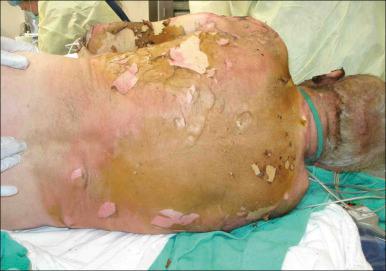
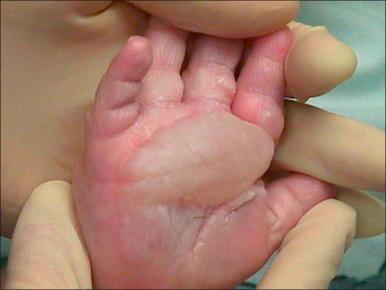
Burn injuries can be divided into three zones ( Fig. 6.3 ). At the point of greatest damage is the zone of coagulation, in which there is irreversible tissue damage. Surrounding this is the zone of stasis, an area of the wound that can potentially necrose with inadequate treatment or heal if the area is properly perfused. Should the patient be underresuscitated, this region of the burn wound may progress to become part of the zone of coagulation. The third zone, at the edge of the burn injury, is the zone of hyperemia, which will likely heal with treatment if the region maintains perfusion and infection is not involved.
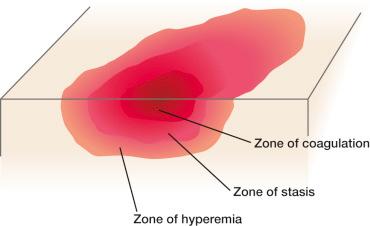
According to ABA guidelines, burns involving the hands, feet, face, genitalia, and perineum, and those that cross major joints should also be treated in a burn center. Lasting damage to these areas can have a severe impact on patient outcomes. Impairments to the hands can affect grip and can therefore have deleterious effects upon the ability to work or handle activities of daily living. Burns of the feet or those that cross joints can severely limit mobility, while burns to the face can impair vision and the ability to eat, as well as having an emotional impact due to altered appearance. Finally burns to the genitalia and perineum can restrict patient autonomy, hindering urinary and sexual function or the ability to defecate. While burns to these areas may not necessitate specific inpatient treatment, they should be treated at a burn center with the proper resources to handle the special reconstructive and rehabilitative needs of these patients.
Special consideration should be given to burns that are completely circumferential around a part of the body, such as a limb or the trunk. Due to the tissues beneath the wound becoming edematous, circumferential wounds can cause increased pressure, resulting in compartment syndrome and leading to ischemia. The classic symptoms are the five “P's” which are pain, pallor, paresthesia, pulselessness, and paralysis. The physician should have a high index of suspicion for compartment syndrome, which necessitates inpatient treatment.
Fatal cardiac dysrhythmias are a major risk following electrical injury; therefore all patients with electrical injuries should have an electrocardiogram (ECG) performed, and all meet the criteria for referral to a burn center. Injuries due to low voltages are usually smaller, therefore, these patients, as long as no ECG abnormalities are present and no loss of consciousness occurred, can be treated as an outpatient should there be no other indication for admission. The presence of dysrhythmia, ECG abnormalities, or a history of loss of consciousness is grounds for admission to the hospital for monitoring. A common means of injury from low-voltage energy sources is that of children sucking on a defective electrical cord, resulting in damage to the lips, tongue, gums, or dentition. Such patients may need admission because oral intake may be hindered. Such injuries to the mouth are at risk of resulting in rupture of either the superior or inferior labial arteries, especially from days 4 through 7 post burn ( Fig. 6.4 ). If treating as an outpatient, the caregiver should be educated on this risk and instructed in proper first aid, which consists of pinching the labial commissure between the index finger and thumb.
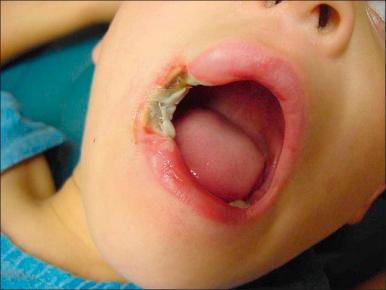
All patients exposed to high-voltage electricity should be referred to a burn center due to increased deep-tissue injury and subsequent increased amputation rates, organ failure, and mortality as compared to patients with comparable TBSA thermal burns.
While not caused by thermal injury, chemical burns are treated by burn surgeons, and chemical injury is one of the criteria for referral to a burn center. Initial management of a patient with a chemical injury involves brushing off dry chemicals and copious flushing of areas affected by wet chemicals. The author recommends flushing until the patient is pain-free, and, with alkaline exposure, until the skin pH is 7, which is the pH of water. The normal skin pH is around 5, but once the pH has reached 7 further injury seems unlikely. As with thermal injuries, prompt irrigation of chemical injuries results in decreased full-thickness injury as well as shorter hospital stays. Irrigation of the chemical burn may need to continue in excess of 1 hour. In the author's experience, it often takes longer in alkaline exposures to reach a pH of 7.
Specific considerations need to be made depending on the causative substance. Phenol compounds do not flush well with water, so polyethylene glycol or vegetable oil followed by water lavage may be used. Water needs to be avoided if metallic sodium or potassium is suspected because the resultant exothermic chemical reaction may worsen the burn injury. Hydrofluoric acid injuries are treated with calcium following water lavage, and a calcium gel can be used to cover the injury. Some recommend that the tissues should be injected with calcium gluconate to alleviate pain as well as prevent tissue necrosis. The author uses intraarterial calcium gluconate, slowly injecting into the artery supplying the affected part until the patient is pain-free. This may have to be repeated in a few hours. Dermal exposure to hydrofluoric acid results in the absorption of the dissociated fluoride anion and subsequent insoluble salt formation by binding with calcium and magnesium. The patient may then develop hypocalcemia and hypomagnesemia accompanied by hyperkalemia due to potassium efflux from cells. Hypocalcemia is the main cause of death following hydrofluoric acid poisoning via the induction of fatal dysrhythmias. As little as 1% TBSA exposure to 50% concentration hydrofluoric acid or 5% TBSA exposure to any concentration is enough to result in potentially fatal hypocalcemia. Identification of the chemical and communication with local poison control centers is recommended if needed. After the appropriate removal of the causative chemical, treatment is the same as for any other wound.
Inhalation injury is one of the criteria for referral to a burn center, and the physician must have a high index of suspicion concerning inhalation injury and carbon monoxide poisoning based on the circumstances surrounding the burn injury because there may be little to no exterior sign of injury. The sequelae of both of these complications may not be initially present and may develop over time. Of note, airway obstruction may occur following burns of the oropharynx, face, or neck as the tissues of the upper airway become edematous. Therefore, observation is warranted if there is any suspicion of inhalation injury.
Due to the often accidental nature of burn injuries, there is frequently concomitant trauma at the time of presentation. Assessment should be made whether the associated trauma or the burn injury is of greater threat to the patient's morbidity or mortality, with the decision of the need for direct admission or stabilization and referral to a burn center made at the discretion of the treating physician.
A comprehensive medical history of the burned patient should be performed to identify those with preexisting medical conditions that would complicate the ability to properly care for the patient in a community setting or have an impact on recovery, morbidity, and mortality.
The stress of the burn may exacerbate previous medical conditions such as diabetes mellitus, asthma, or coronary artery disease.
Proper outpatient management of burns requires that there are sufficient resources available to care for the wound and provide for proper follow-up care. Such resources include either persons, such as family members or visiting nurses, who can assist with dressing changes, as well as the ability to easily access medical care and receive proper rehabilitation and psychosocial services. Should these resources be unavailable to the patient in the community setting, referral to a burn center should be considered.
Of serious concern when considering the social circumstances surrounding the patient is the possibility that the injury was nonaccidental. If there is any suspicion that the injury to the patient was intentional, admission to the hospital and notification of the proper agencies is warranted for their protection ( Figs. 6.5 and 6.6 ).
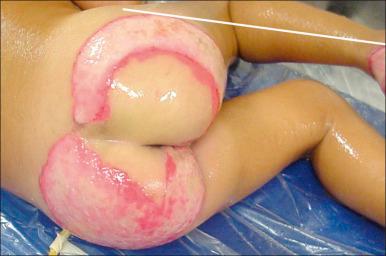
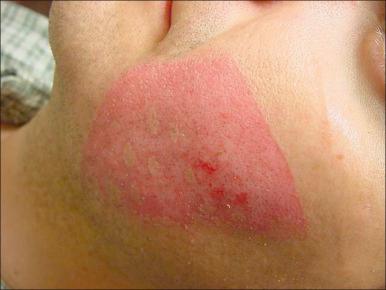
Available resources should be taken into account in the decision-making process. Pediatric burn patients should be treated at hospitals with qualified personnel and equipment to treat children.
Become a Clinical Tree membership for Full access and enjoy Unlimited articles
If you are a member. Log in here